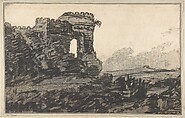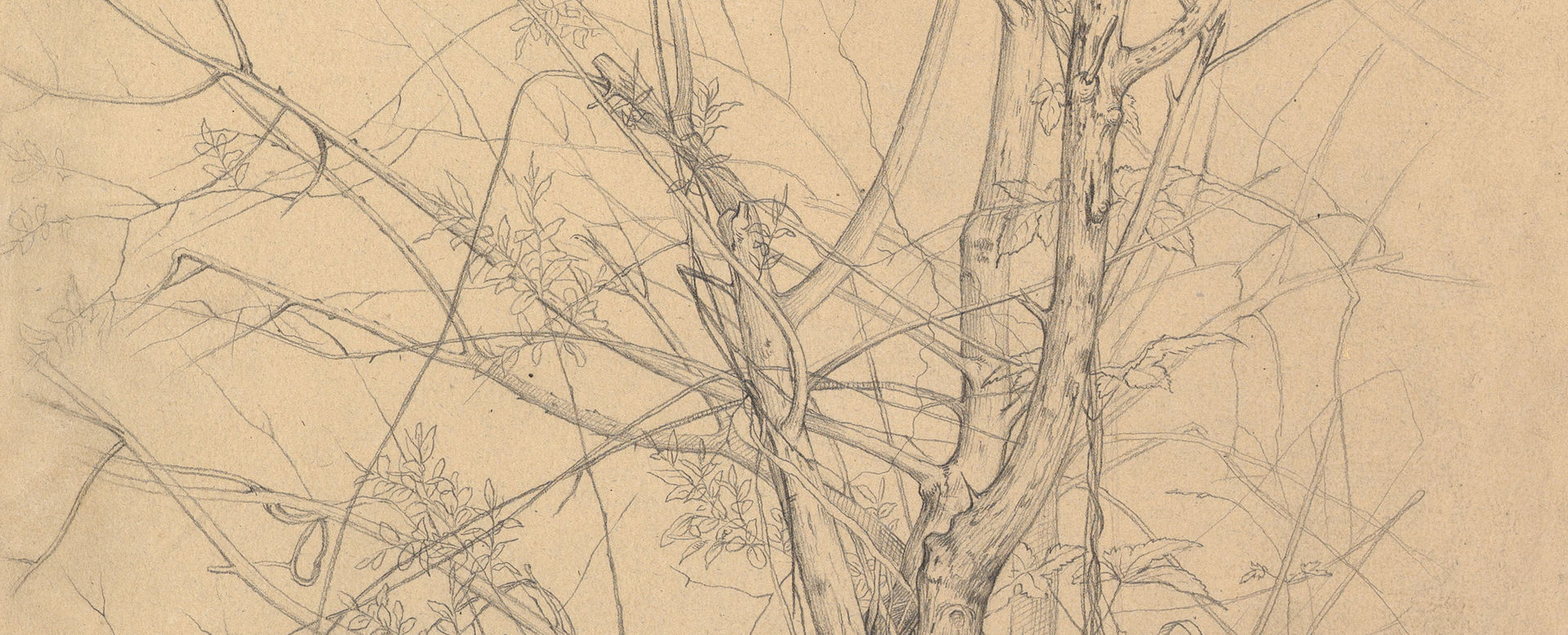Ruined Castle and Trees
Alexander Cozens British
Not on view
This quickly sketched view of a ruined castle with a vegetated foreground and possibly trees is an example of Cozens’s technique of "blotting." To create this drawing, Cozens laid down a faint wash first, which has mottled over time, and then further defined the image with black ink. Cozens used this technique primarily to create imaginary landscape views, but in this case the composition was inspired by a real place: the Tomb of Caecilia Metella, a 1st century BC mausoleum on the Via Appia just outside the city of Rome. The crenellated brick wall of the ruined castle depicted here was added sometime between the 11th and 14th century. In 1762, Cozens exhibited an oil painting of the same subject, though this is lost today.
This image cannot be enlarged, viewed at full screen, or downloaded.



